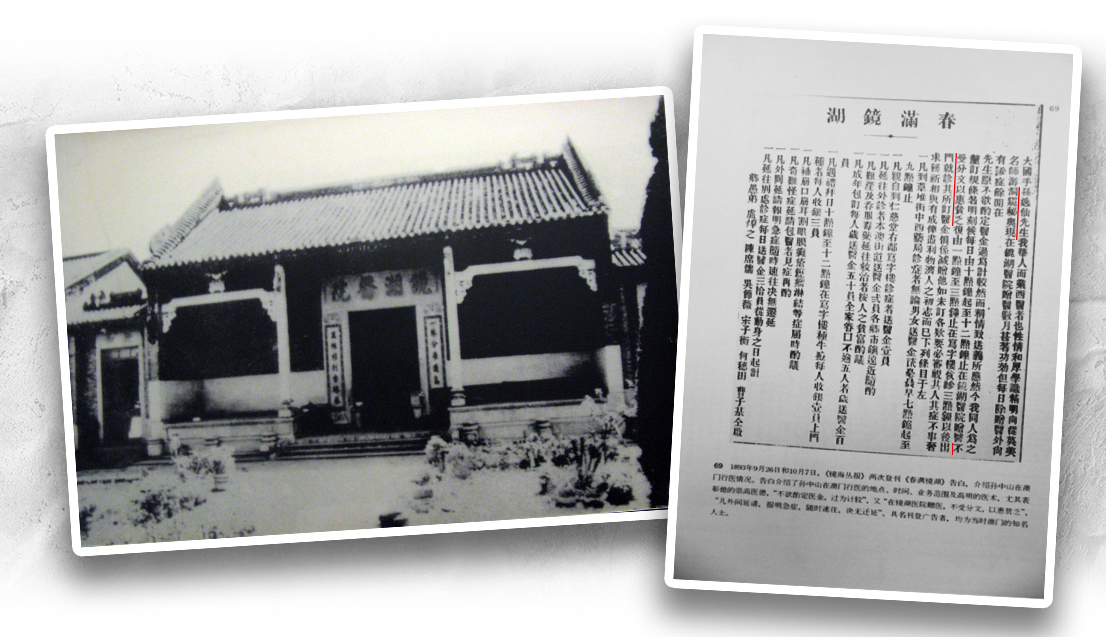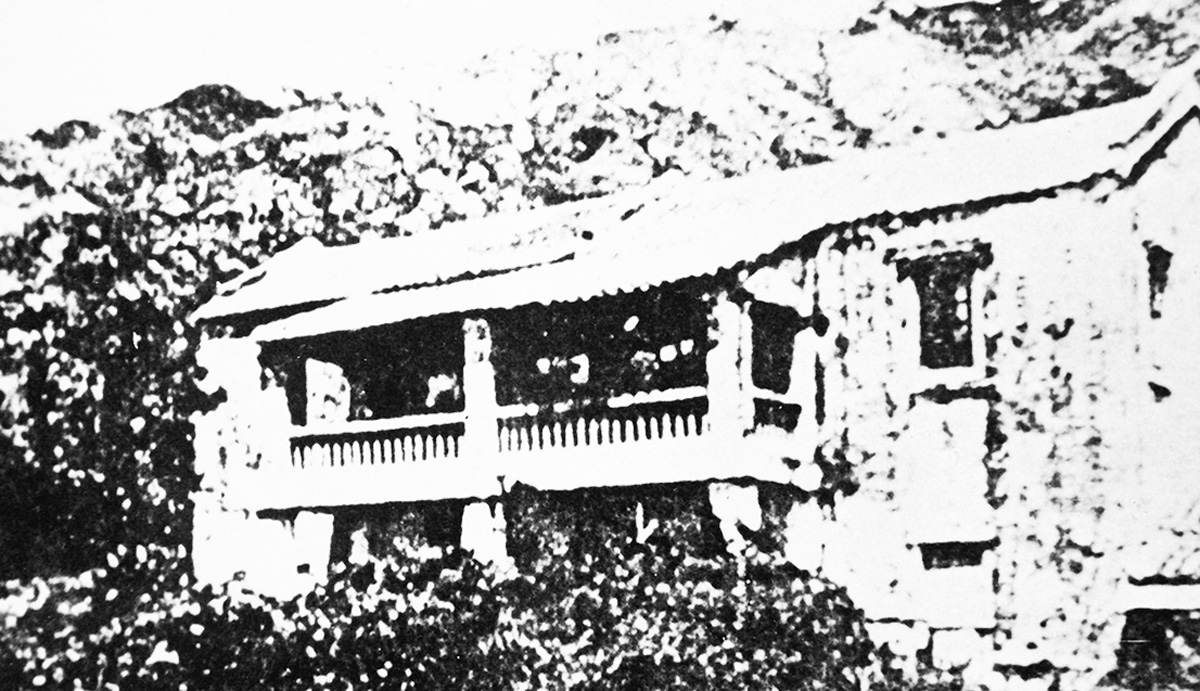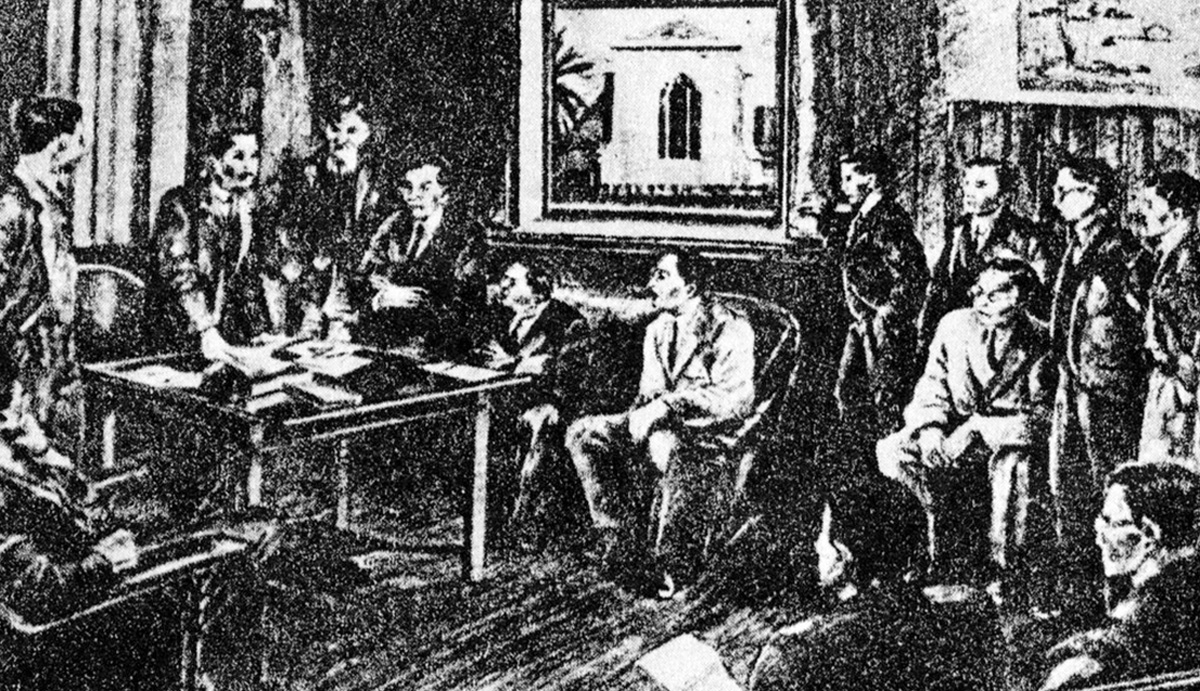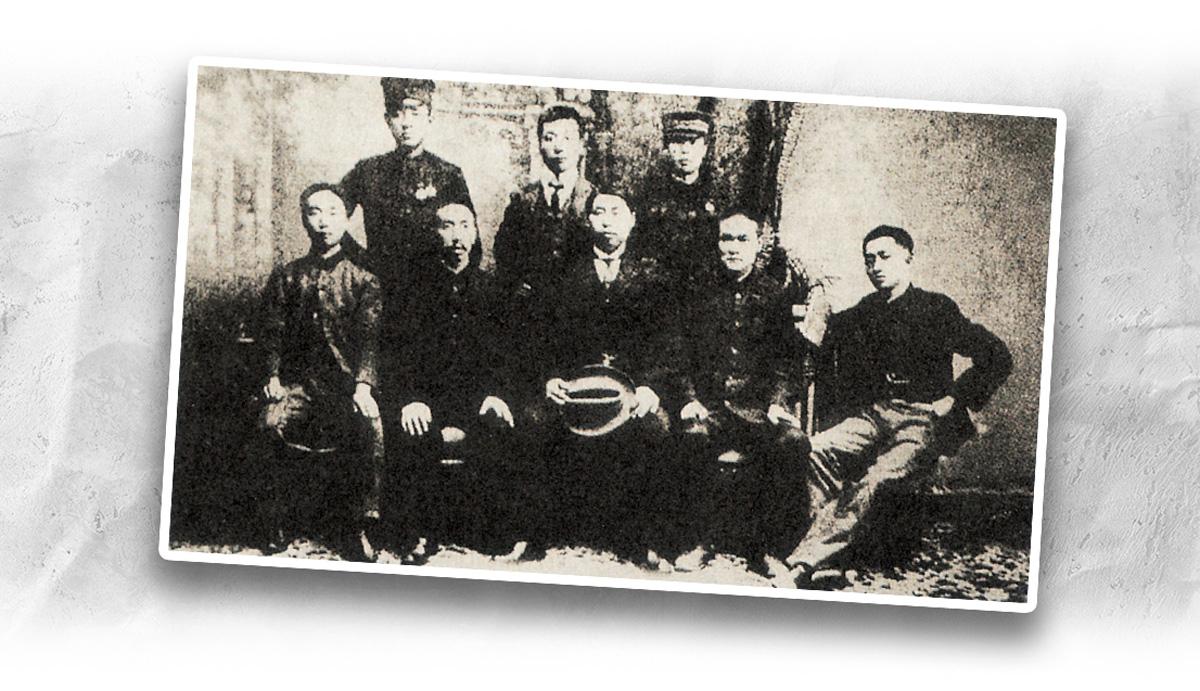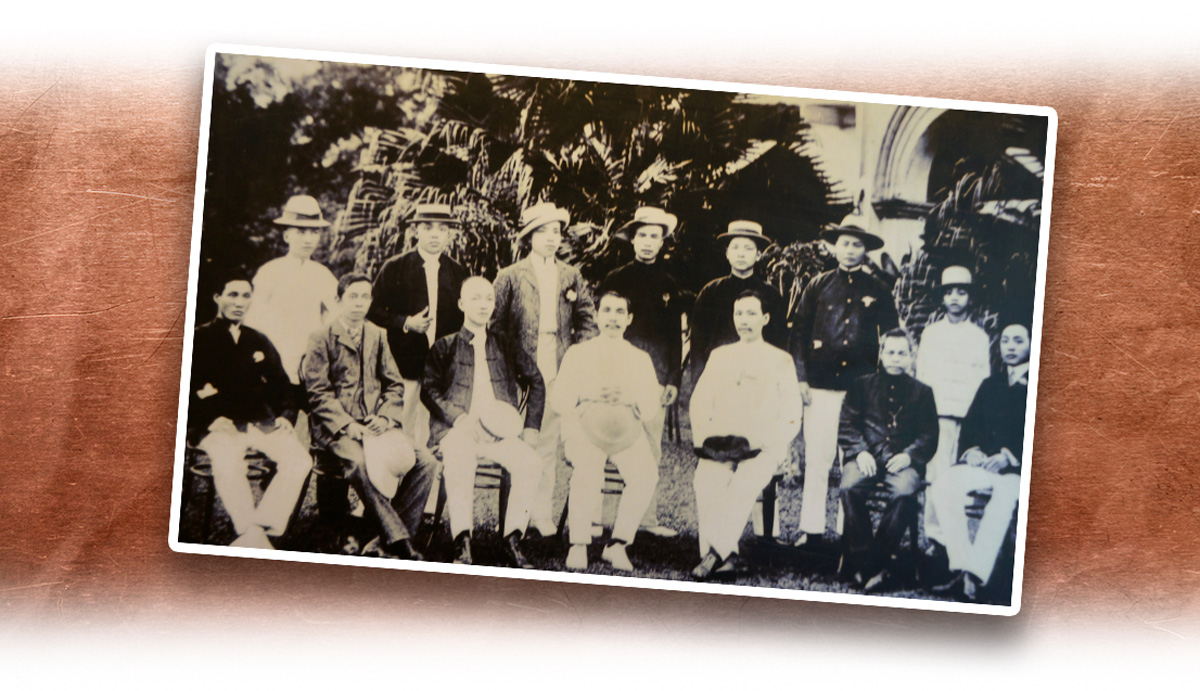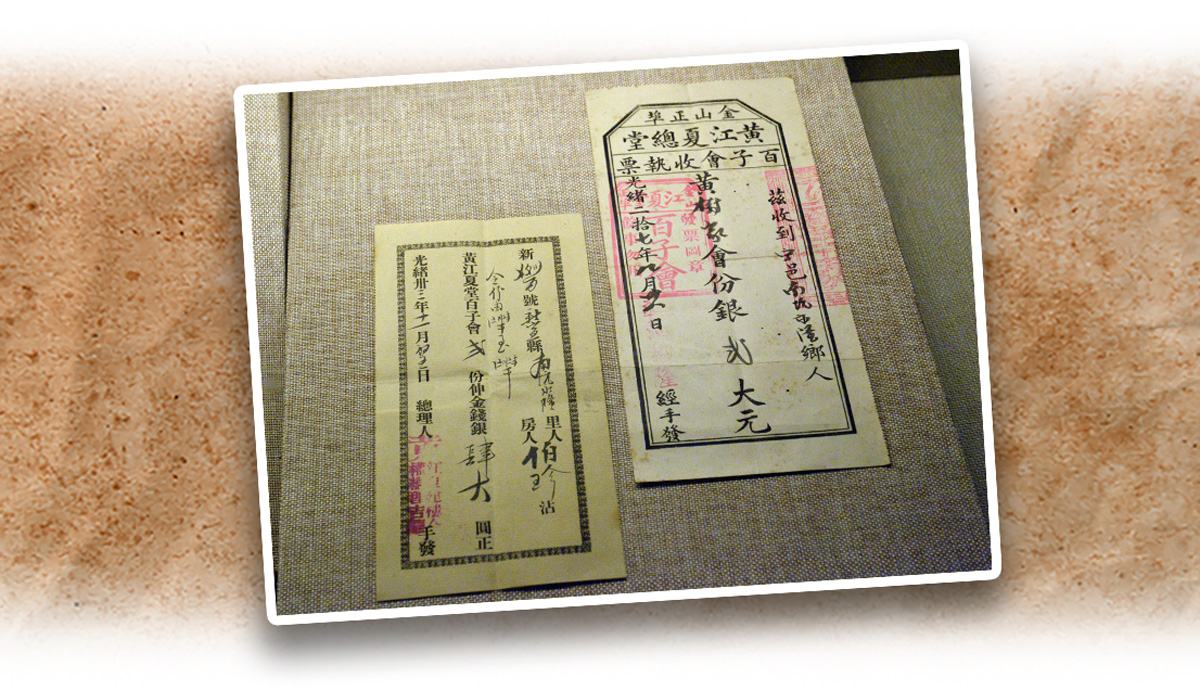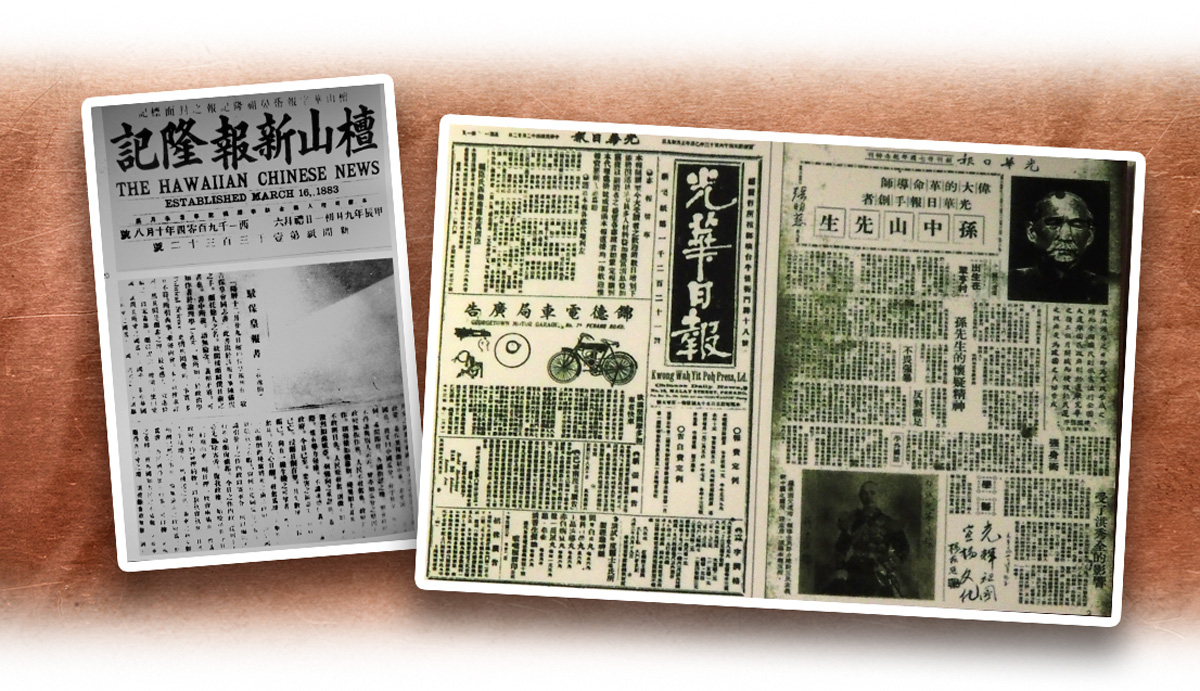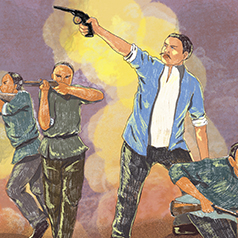The anti-Qing revolution found an outpouring of support from Hong Kong, Macao, and overseas Chinese. Macao was an important locale for revolutionary activities, and its people financed the revolution time and again. Hong Kong was a cradle for Sun Yat-sen’s (孫中山) revolutionary ideas during his study, then a base for him to establish his revolutionary organisation, advocate the revolution, and initiate uprisings. Six out of the ten uprisings launched by Sun and his comrades between 1895 and 1911 used Hong Kong as a secret plotting base. It served as a testament to the revolutionaries’ massive following in Hong Kong.
Overseas Chinese had an important role, too. Firstly, many revolutionary groups were first formed overseas. The Revive China Society (興中會), for example, originated in Honolulu, the United States, before it set up its headquarters in Hong Kong. Another example was the United League (同盟會), which was formed in Tokyo, Japan, and had various branches throughout the world.
Secondly, much of the planning and fundraising work for the uprisings took place overseas. Many anti-Qing publications were first released abroad as well, thanks to the support from overseas Chinese. Examples being The Hawaiian Chinese News (《檀山新報》), Great Harmony Daily (《大同日報》), and the Thoe Lam Jit Poh (《圖南日報》) which debuted in Honolulu, San Francisco, and Singapore respectively.
Moreover, many core members of the revolutionary movement were either overseas Chinese or overseas Chinese students. The first 20-plus members inducted into the Revive China Society were all overseas Chinese. They enthusiastically financed and even participated the uprisings. Among the 72 revolutionary martyrs of the Yellow Flower Mound (黃花崗七十二烈士), 29 were overseas Chinese. For these reasons, the overseas Chinese have been rightly called the “mother of revolution”.
|
|
What would be a summary of Hong Kong’s contribution to the anti-Qing revolution? |
|
|
See answer below. |
Pictured on the left: the former site of Kiang Wu Hospital (鏡湖醫院) in Macao; pictured on the right: an article published on Echo Macaense, a newspaper in Macao, about Sun Yat-sen’s provision of free medical care to the locals. According to the article, he “does not accept a single cent in order to help the poor”. Many people of Macao supported the revolution. The region was one of the revolutionaries’ important locales.
A photo of the Red House, a building near Castle Peak of Tuen Mun, taken in Hong Kong in the early 20th century. It used to be a place where revolutionaries planned their uprisings. During the late Qing dynasty, Hong Kong became an important revolutionary base because of the local support.
The Red House was located on Castle Peak Farm. Both were owned and run by Li Ki-tong (李紀堂), the son of the wealthy businessman Lei Sing (李陞). Li let the Revive China Society use his farm as a base. In addition, he was among the many financial backers of the revolution in Hong Kong. They came from different walks of life, but they had the same passion for saving China through revolution.
Lauded as the “mother of revolution”, the overseas Chinese played a significant role in the anti-Qing revolution. The illustration depicts the overseas Chinese in Honolulu rallied by Sun Yat-sen to form the Revive China Society, China’s first revolutionary organisation.
A group photo of Huang Xing (黃興, third figure from the left in the front row) and his revolutionary comrades taken in Tokyo, Japan. On 20 August 1905, the United League was established in Tokyo. The Chinese expatriates and students in Japan formed the United League’s backbone.
With strong support from overseas Chinese, the United League established branches in various locations worldwide. In April 1906, a branch was established in Singapore. Pictured is a photo of Sun Yat-sen and the members in Singapore.
On 31 December 1909, the United League established a branch in New York, the United States.
In early 1911, the revolutionaries worked hard to solicit donations from overseas Chinese to finance the impending uprising in Guangzhou (廣州). Pictured is a photo of Sun Yat-sen and the overseas Chinese in Canada taken during his fundraising trip there.
Donation receipts issued to the overseas Chinese in the United States. During the late Qing dynasty, most of the overseas Chinese led a hard life. It did not stop them from financing the revolution.
Some influential overseas Chinese leaders were among the many ardent supports of the revolution. Tan Kah Kee (陳嘉庚) and Wong Nai Siong (黃乃裳) were two notable examples.
Born in Xiamen (廈門), Fujian Province (福建), Tan Kah Kee spent most of his life as an overseas Chinese and rubber magnate in Singapore. He actively promoted cultural education, and other community services in his adopted nation and in China. He once served as a member of the United League and a significant financial backer to Sun Yat-sen’s revolutionary activities. Later, he founded Xiamen University (廈門大學) and other schools.
Wong Nai Siong was born in Fuzhou (福州), Fujian. During his life, he led more than 1,000 migrants from Fuzhou to cultivate the undeveloped lands in Sibu of Sarawak, Malaysia. In 1906, Wong joined the United League after meeting Sun Yat-sen in Singapore. In 1907, he was involved in the planning of the Huanggang Uprising (黃岡起義) in Chaozhou (潮州), and returned to China the same year to promote education and industrialisation in his hometown.
The major overseas revolutionary propaganda: The Hawaiian Chinese News debuted in Honolulu in 1902; and Kwong Wah Daily (《光華日報》) debuted in Penang, Malaysia, in 1910. These publications helped promote the revolutionary ideas among overseas Chinese and build a support base abroad.
|
|
What would be a summary of Hong Kong’s contribution to the anti-Qing revolution? |
|
|
In a speech he gave at the University of Hong Kong in 1923, Sun Yat-sen said that his revolutionary ideas were conceived in Hong Kong. Not only was Hong Kong the cradle for Sun’s revolutionary ideas, but it was also where he studied as a medical student, established a revolutionary organisation, and staged the anti-Qing uprisings. The Revive China (興中會), the revolutionary forerunner group, was set up in Honolulu but headquartered in Hong Kong. Hong Kong was also where the revolutionary newspaper China Daily (《中國日報》) was founded in December 1899. Moreover, six out of the ten uprisings launched by Sun and his comrades between 1895 and 1911 used Hong Kong as a secret operation base. For many of the uprisings, Hong Kong was the revolutionary centre for commanding, organising, fundraising and remitting, as well as weapon purchasing, manufacturing and transferring. It was a communications and recruitment hub for revolutionaries at home and abroad. It also served as a perfect refuge whenever an uprising failed. All these exemplified that Hong Kong contributed significantly to the success of the anti-Qing revolution. |
Source of most photos used in this feature piece: Fotoe





